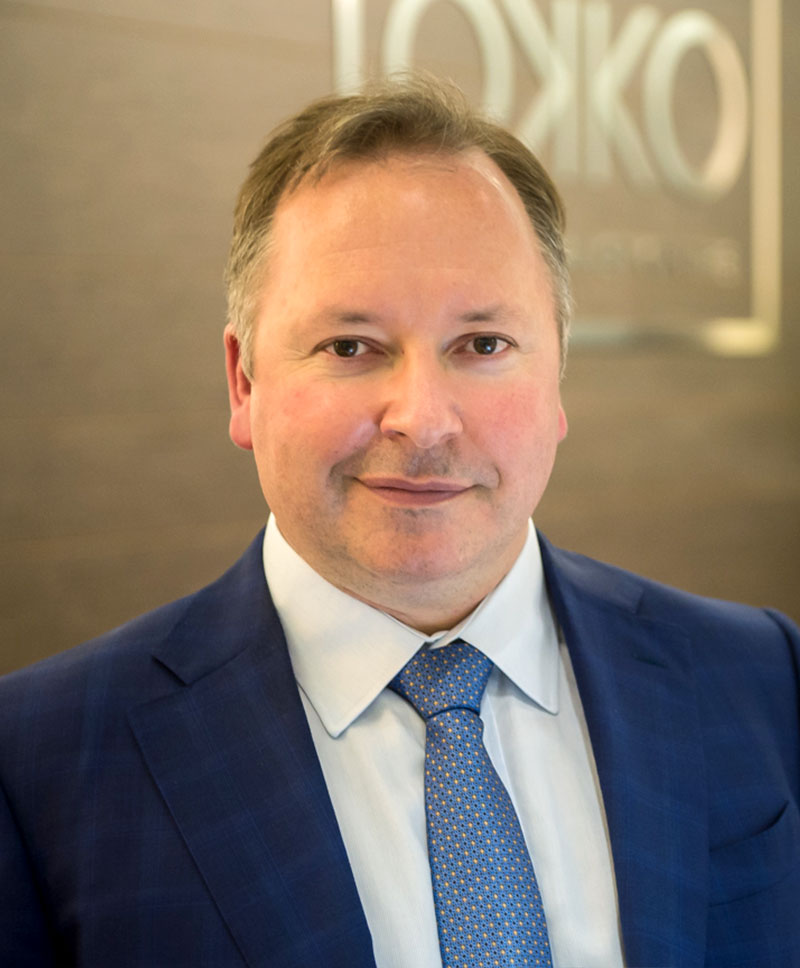SmartSight vs LASIK Eye Surgery: What’s the Difference?
If you’re considering laser vision correction to bid farewell to glasses or contact lenses, you might have wondered to yourself, “SmartSight vs LASIK Eye Surgery – what’s the difference?”
In this article, Dr. Matt Russell from VSON will explain the key distinctions and advantages of both procedures to help you make an informed decision for your vision needs. (This is not to be confused with the question some people ask “What’s the difference with Smartsight vs FemtoLASIK?”. FemtoLASIK is a different version of the LASIK treatment we don’t offer.)
So you may be considering LASIK eye surgery if you’re looking to get out of your glasses, contact lenses, or both. Shortsightedness, long-sightedness, and astigmatism are just a few conditions that we can correct with this procedure.
Understanding LASIK Eye Surgery
LASIK has long been the favored laser vision correction treatment for patients under 45 years old with various prescriptions. The main reason for the popularity of LASIK was because of two factors – the very high level of accuracy and the very rapid recovery.
The procedure involves creating a corneal flap and reshaping the cornea to correct vision. The surface layer of the flap, typically heals within four hours, resulting in a rapid recovery. Most LASIK patients experience significant vision improvement by the morning after the surgery and can resume regular activities promptly. (Activities such as driving, reading, and using devices that day.)
However, for the first four hours, the eye is gritty and quite watery until the surface of the LASIK flap heals. We also recommend avoiding swimming for two weeks and staying away from contact sports for one to three months, depending on the particular sport.
LASIK is an excellent procedure, but is there anything better than LASIK? The answer to that is “Yes, for the right patient – now there is”, and that procedure is called SmartSight.
Discovering SmartSight Eye Surgery
SmartSight, also known as Femtosecond lenticule extraction or previously termed, SMILE, is an advanced form of laser vision correction, surpassing LASIK, its predecessor.
This procedure involves using a laser to create a thin lens-shaped layer of corneal tissue called a lenticule, which is removed through a small 2 mm incision-like keyhole LASIK. Compared to LASIK’s larger incision, SmartSight’s less invasive approach offers numerous benefits.
What are the SmartSight benefits?
SmartSight laser eye surgery retains all the advantages of LASIK, including rapid vision recovery. However, due to its minimally invasive technique, patients often experience even quicker healing and less immediate discomfort.
Unlike LASIK, SmartSight doesn’t involve creating a corneal flap, making it suitable for individuals engaged in contact sports or professions with a higher risk of eye injury. Moreover, SmartSight expands the range of eligible candidates, accommodating people with thinner or weaker corneas and higher prescriptions.
SmartSight has benefits when it comes to dry eyes. Because SmartSight affects the corneal nerves much less than LASIK or TransPRK, people generally experience a lot lower level of dry eye symptoms following treatment. Also, SmartSight is suitable for some patients with pre-existing dry eyes who would have been excluded from having laser vision correction in the past.
SmartSight is advanced technology compared to the previous generation of Lenticule Extraction or keyhole LASIK, called SMILE. The big breakthrough is that SmartSight can treat astigmatism much more accurately and treat a broader range of shortsightedness than SMILE. We expect to have the ability treatment of long-sightedness over the next year or so.
Not everyone with every prescription is suitable for LASIK or SmartSight. The best place to start to explore which treatment may be the best option to correct your vision is to take our online self-test to determine if LASIK or SmartSight is best suited to meet your optical needs.
A free laser vision assessment at VSON will give you the best indication of the treatment that’s right for you, so go ahead and book online to take the first step to explore your options to free yourself from glasses and contact lenses.
What are the LASIK Benefits?
LASIK eye surgery might be for you if you’re tired of your glasses, contact lenses, or both. Shortsightedness, long-sightedness and astigmatism are just a few conditions that can benefit from this procedure.
Until very recently, LASIK has been the most popular laser vision correction option for patients under the age of 45 years with any type of prescription. The main reason for the popularity of LASIK is because of the very high level of accuracy and rapid recovery.
During LASIK the surgeon makes a corneal flap. The surface layer of the flap heals within four hours.
This means that after LASIK eye surgery, the recovery is very quick and one can resume regular activities the next day.
Almost every patient is very comfortable the morning following treatment, but for the first four hours, the eye is gritty, scratchy and quite watery as the surface of the LASIK flap heals. The morning after LASIK, the vision has improved dramatically and most people are back to driving, reading and using devices that da.
They can resume light exercise within three days. We recommend avoiding swimming for two weeks and staying away from contact sports for one to three months depending of the particular sport.
SmartSight vs LASIK vs TransPRK – What’s right for me?
To answer this question we need to unpack what TransPRK is. This is a minimally invasive, all-laser procedure effectively corrects different types of refractive errors in the eye in just one step.
Trans PRK laser eye surgery can correct long-sightedness, short-sightedness and astigmatism. The TransPRK procedure doesn’t require the creation of a corneal flap and is a non-invasive single-step refractive surgery procedure. We perform surface ablation, a gentle yet effective procedure for removing the corneal epithelium, in just one step. Each surgery has its benefits depending on your vision correction needs.
About our laser eye surgeon
Dr Matthew Russell and his staff can provide you with guidance based on your unique situation, your specific goals, and your comprehensive eye health.
We will determine the best vision correction option for you, whether you are suitable for SmartSight, LASIK, TransPRK, lens replacement, cataract surgery, or ICL implants.
As a Fellow of the Royal Australian and New Zealand College of Ophthalmologists, Dr Matthew Russell has performed thousands of eye procedures.
He was the first eye surgeon in Australia to perform SmartSight and the first surgeon in Brisbane to perform laser-assisted refractive lens replacement and laser-assisted cataract surgery.
He has accomplished many other professional firsts in the eye care industry.
- First use of extended depth of focus (EDOF) IOLs for cataract surgery in Brisbane.
- First Enhanced Multifocal Lens Replacement surgery (combined EDOF & Multifocal IOL surgery).
- First to use the following intraocular lens implants – J&J Symfony, J&J Synergy, Telereon Femtis IOL, and Acufous IC-8.
- Introduce a small-aperture intraocular lens for post LASIK presbyopic correcting cataract surgery, enhancing the post-operative depth of focus (Acufocus IC-8TM).
To learn more about laser eye surgery, or if you have any questions, schedule a free call.

Hi, I’m Dr. Matthew Russell, a laser and cataract surgeon
HI I’M DR. MATTHEW RUSSELL A LASER EYE AND CATARACT SURGEON
With over 15 years of experience, I enjoy the privilege of helping patients of all ages reclaim clear vision or preserve it for as long as possible.
Vision correction and high-precision cataract surgery hinge on the expertise and skill set of the provider who also has access to the most precise tools for the job. Ophthalmic surgeons like me know how to make treatment safe, comfortable and positive for the patient. They know how to minimise the risk of complications and maximise successful outcomes.
I have a passion for helping my patients enjoy the clear, high-definition vision they need to live rich and active lives. Now, I have hand-picked a team of professionals that share my passion and commitment to exceptional care.
Dr. Matthew Russell
MBChB, FRANZCO






